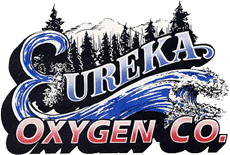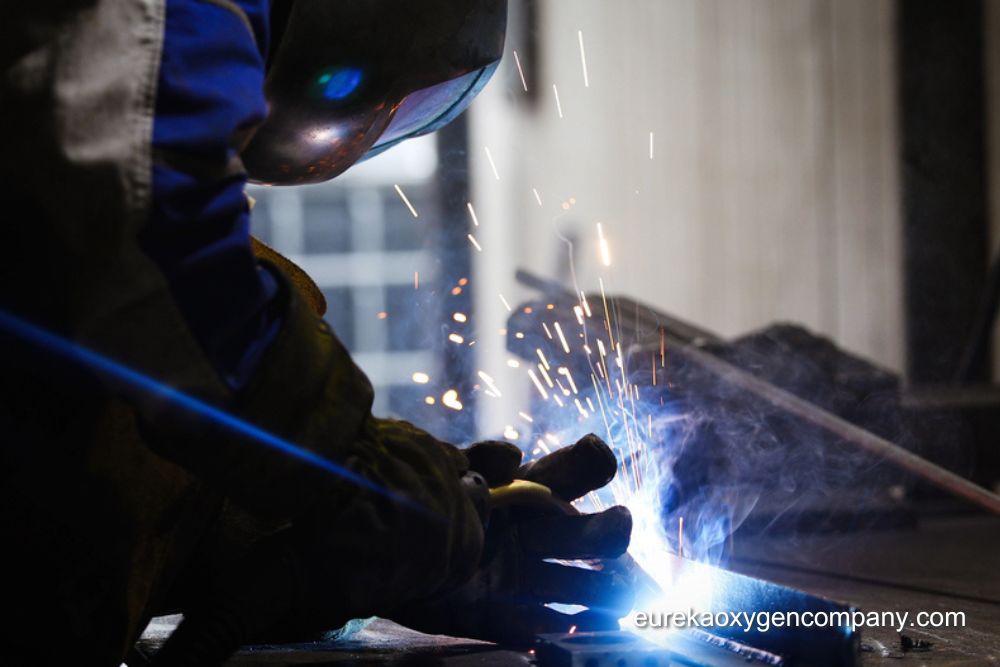Understanding oxygen hazards and how to keep a worksite safe
Oxygen is a powerful oxidizer, and in environments with elevated oxygen levels, materials that might not normally burn in air can ignite easily. The presence of oxygen lowers the ignition temperature and increases the combustibility of materials, turning a small spark into a large fire quickly.
Certain materials become particularly hazardous when exposed to high concentrations of oxygen. For example, oils and greases, which are typically harmless, can ignite spontaneously when they come into contact with pure oxygen.
In this post, we’ll cover everything you need to know about oxygen and welding safety, including common hazards and tips to keep your workspace safe.
Common Scenarios Where Oxygen Hazards Occur
While oxygen is crucial for various industrial and medical applications, certain scenarios can amplify the risks associated with its use, making it essential to identify and mitigate potential hazards in these environments.
Welding & Cutting Operations
Oxygen is frequently used in combination with acetylene or other fuel gases for welding and cutting. The danger arises when oxygen is stored improperly or leaks from equipment, thus even a small oxygen leak can turn an ordinary fire hazard into a severe threat. With this, oxygen storage safety becomes essential in any industry and workplace.
Medical Environments
In healthcare, oxygen therapy is used to treat patients with respiratory issues. However, oxygen leaks from tanks or concentrators in hospitals or home settings can create a fire hazard, especially in environments where flammable items like bedding or clothing are present.

Emergency response oxygen incidents happen more than you might think, which is why hospitals must ensure the safe handling of oxygen and its proper storage, with regular checks to prevent leaks.
Chemical Manufacturing
Industries that use oxygen for chemical reactions face unique risks. Oxygen supports various chemical processes, but an uncontrolled release or buildup can result in violent reactions, explosions, or fires. Maintaining strict control over oxygen levels and ensuring proper ventilation are critical in these environments, apart from proper oxygen safety regulations and oxygen accident prevention training.
Preventing Oxygen-Related Hazards
Proper Storage and Handling
Oxygen cylinders should always be stored upright and secured to prevent tipping, in a well-ventilated area away from flammable materials. Main oxygen fire prevention practices include keeping cylinders away from heat sources and electrical equipment that could cause sparks. It’s also important to handle oxygen with clean, dry hands and tools to avoid contamination with materials that could ignite.

Leak Detection and Repair
Regular inspection of oxygen systems is vital for industrial gas safety. Leak detection can be performed using soapy water applied to connections, where bubbles will indicate a leak. For more advanced systems, electronic gas detectors can identify oxygen leaks quickly.
Any leaks found should be repaired immediately to prevent oxygen from accumulating, especially in confined spaces where it could create oxygen-enrichment atmospheres.
Use of Compatible Materials
All equipment used with oxygen, including pipes, valves, and fittings, should be made of materials that are compatible with oxygen. This means avoiding the use of oils, greases, and other hydrocarbons that could ignite in the presence of oxygen. Specialized oxygen-compatible lubricants and sealants are available for use in these systems.
Training and Safety Protocols
Oxygen safety training should be provided to everyone handling the gas, recognizing potential hazards and understanding how to mitigate them. Safety protocols should contain the appropriate oxygen safety equipment to prevent static discharge, maintain clean and organized workspaces, and follow proper procedures for opening and closing oxygen valves.
Emergency Preparedness
Emergency response plans should be in place for dealing with oxygen-related incidents. This includes ensuring fire extinguishers are accessible and appropriate for the type of fire that could occur, and that personnel are trained in their use. Regular drills and reviews of safety protocols can help keep everyone prepared.
Final Words
Safety should always be a top priority when working with oxygen. Regular training, proper storage and handling, and a proactive approach to detecting and repairing leaks can prevent accidents. By making safety a core part of operations, industries can ensure the safe use of oxygen in all applications.
We’re proud to offer the best welding supplies that will keep you and your workspace safe. Plus, excellent gas cylinders that comply with all regulations, at an affordable price. Check our locations and delivery area for more information.


